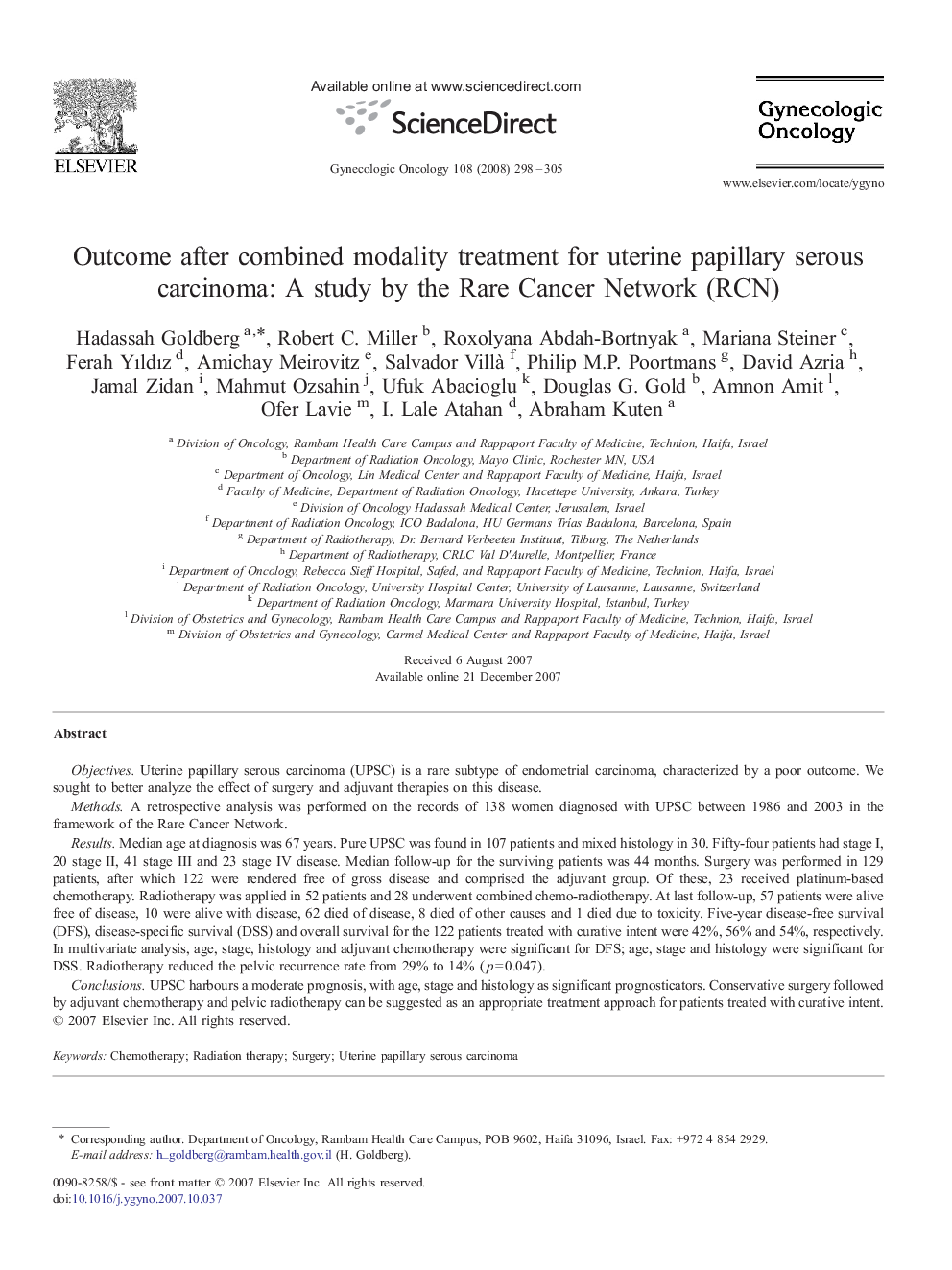| Article ID | Journal | Published Year | Pages | File Type |
|---|---|---|---|---|
| 3946132 | Gynecologic Oncology | 2008 | 8 Pages |
ObjectivesUterine papillary serous carcinoma (UPSC) is a rare subtype of endometrial carcinoma, characterized by a poor outcome. We sought to better analyze the effect of surgery and adjuvant therapies on this disease.MethodsA retrospective analysis was performed on the records of 138 women diagnosed with UPSC between 1986 and 2003 in the framework of the Rare Cancer Network.ResultsMedian age at diagnosis was 67 years. Pure UPSC was found in 107 patients and mixed histology in 30. Fifty-four patients had stage I, 20 stage II, 41 stage III and 23 stage IV disease. Median follow-up for the surviving patients was 44 months. Surgery was performed in 129 patients, after which 122 were rendered free of gross disease and comprised the adjuvant group. Of these, 23 received platinum-based chemotherapy. Radiotherapy was applied in 52 patients and 28 underwent combined chemo-radiotherapy. At last follow-up, 57 patients were alive free of disease, 10 were alive with disease, 62 died of disease, 8 died of other causes and 1 died due to toxicity. Five-year disease-free survival (DFS), disease-specific survival (DSS) and overall survival for the 122 patients treated with curative intent were 42%, 56% and 54%, respectively. In multivariate analysis, age, stage, histology and adjuvant chemotherapy were significant for DFS; age, stage and histology were significant for DSS. Radiotherapy reduced the pelvic recurrence rate from 29% to 14% (p = 0.047).ConclusionsUPSC harbours a moderate prognosis, with age, stage and histology as significant prognosticators. Conservative surgery followed by adjuvant chemotherapy and pelvic radiotherapy can be suggested as an appropriate treatment approach for patients treated with curative intent.
